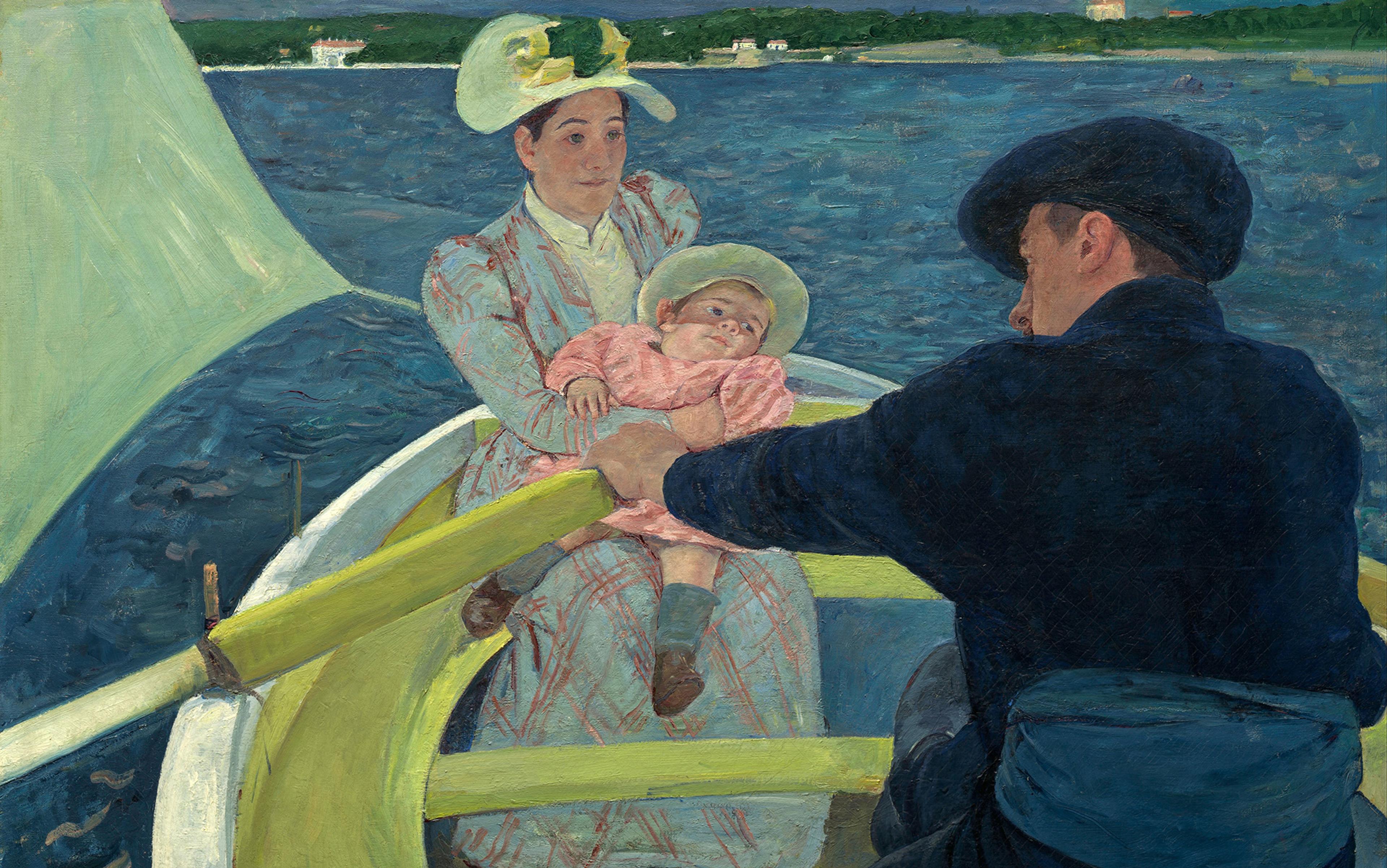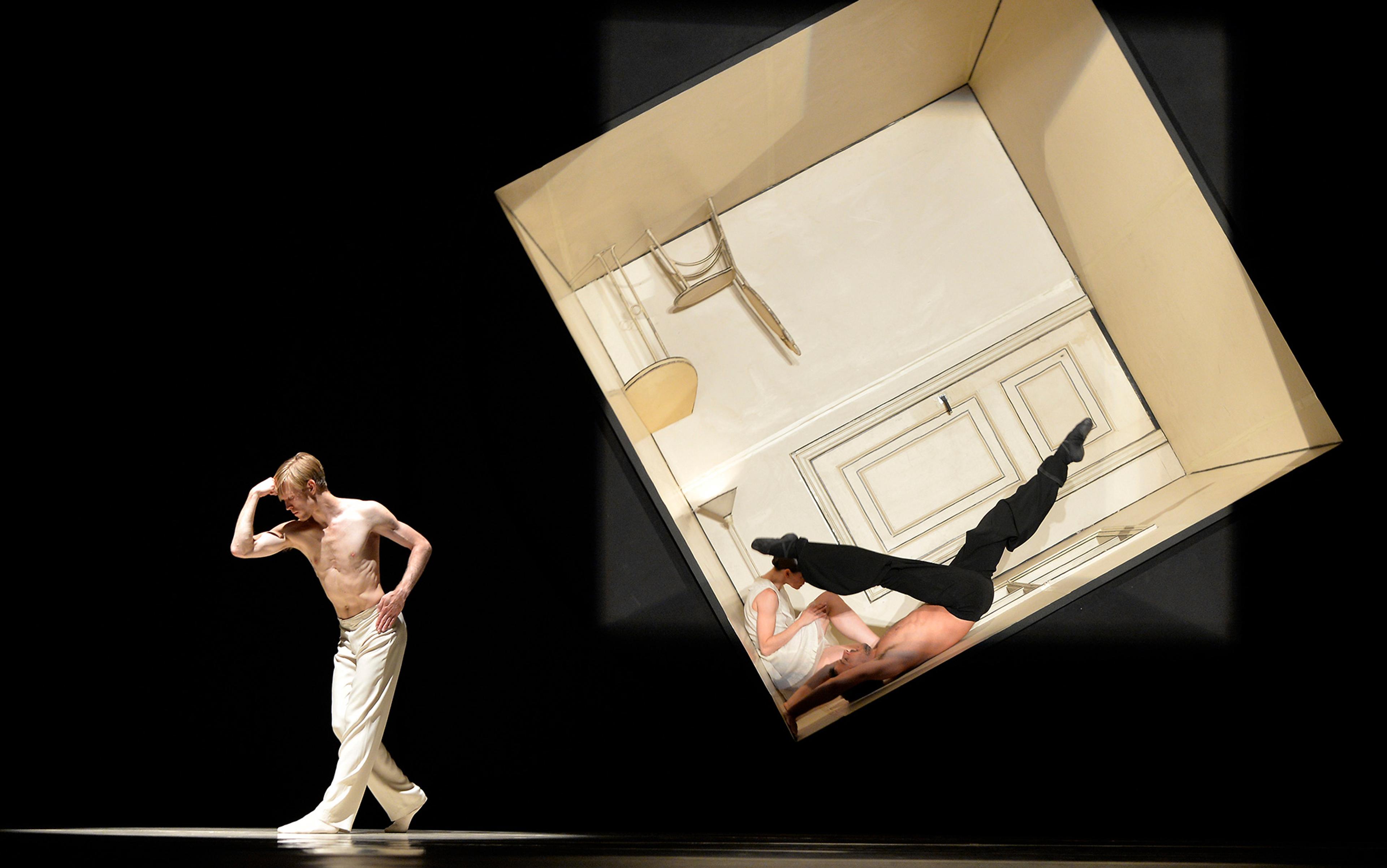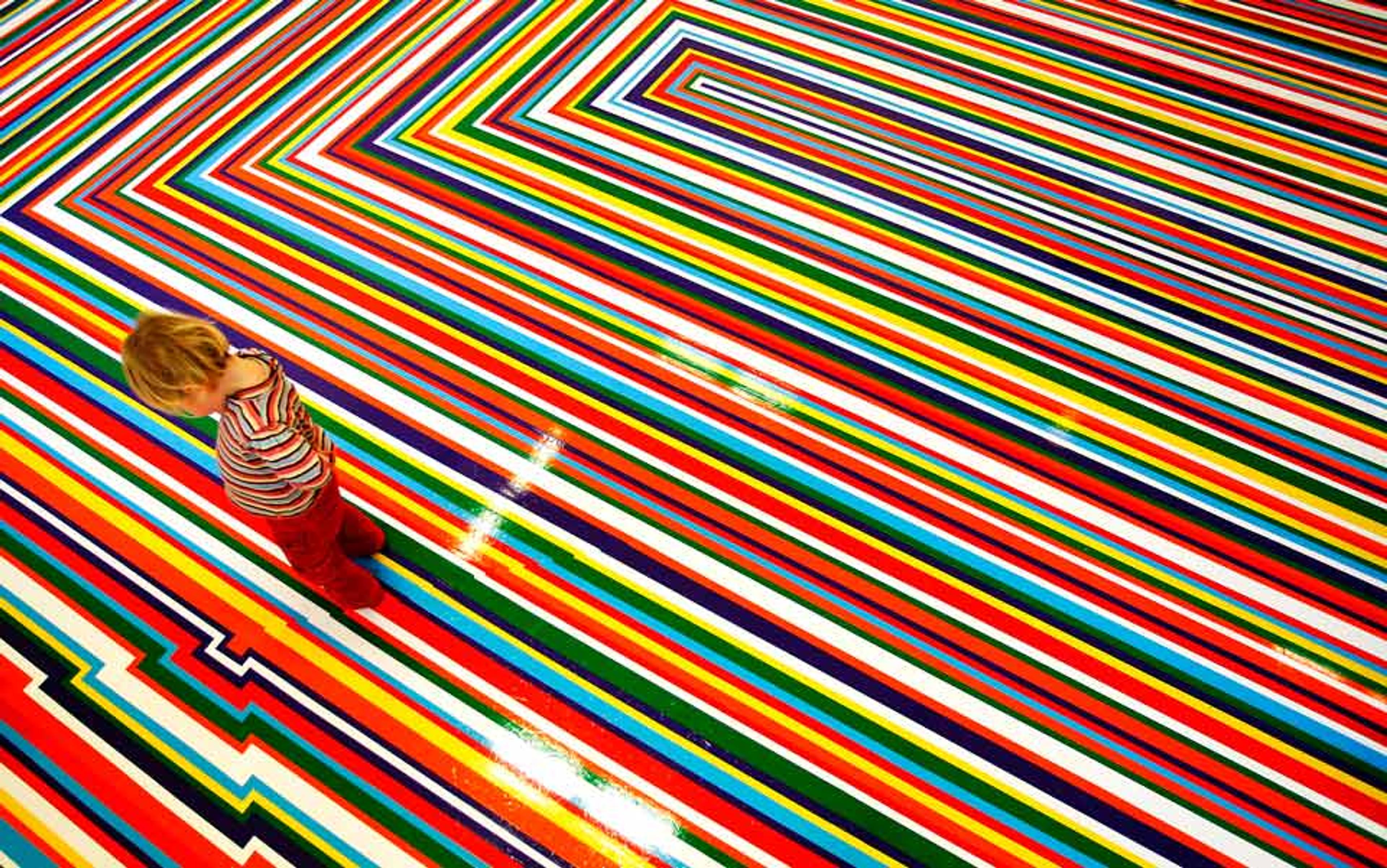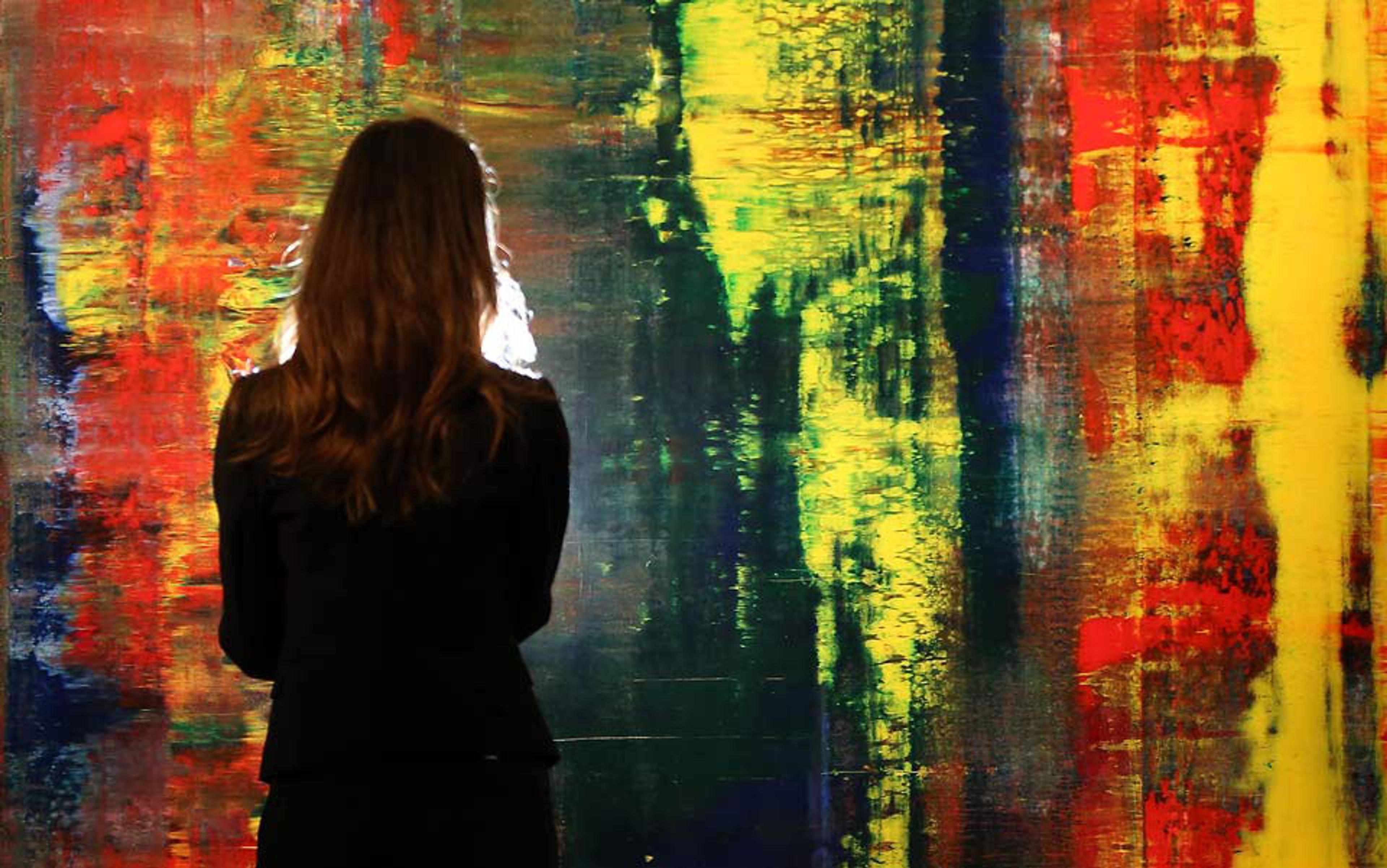Scenario 1: suppose you’ve been gazing intensely at Rembrandt’s Self-Portrait (1659), which hangs in the National Gallery of Art in Washington, DC, and later you’re told that this was actually a painting made by a deep-learning machine that had internalised Rembrandt’s style through exposure to his paintings. You immediately feel that something’s lost. The museum would certainly take the work off its walls. What’s the thing that’s lost?
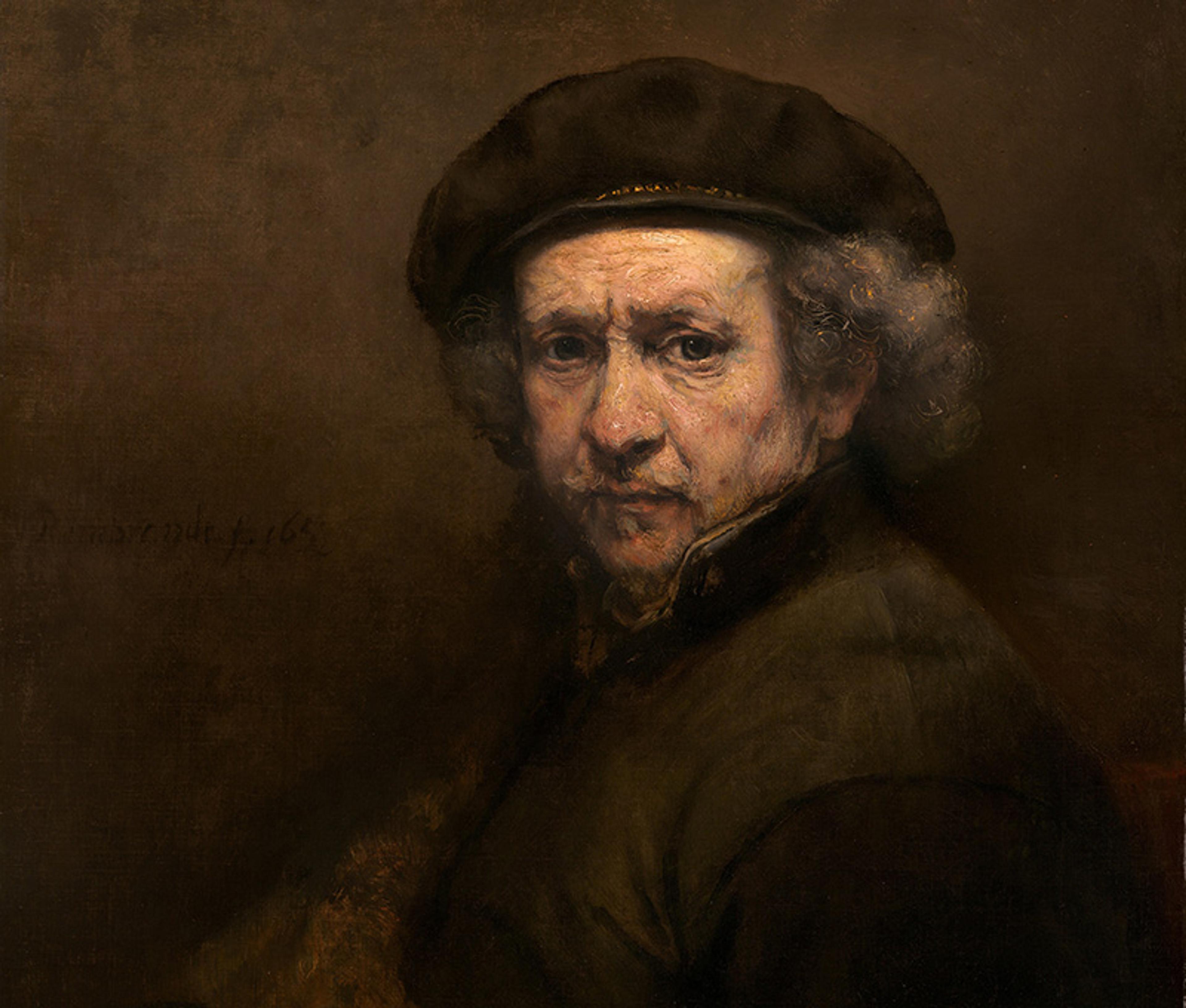
Self-Portrait (detail, 1659) by Rembrandt van Rijn. Courtesy the National Gallery of Art, Washington.
Scenario 2: recently, thousands of paintings covering almost eight miles were found on remote cliffs in the Amazonian rainforest; estimated age: 12,500 years. The Amazonian cliff art depicts humans dancing and holding hands, and now extinct mastodons, Ice Age horses with wild faces (some so detailed that the horse’s hair was shown) and giant sloths – like the weird creatures in a Hieronymus Bosch painting. This made headlines. Standing face-to-face with these actual images on the rocks would be exciting. If the paintings turned out to be a hoax, we’d no longer feel the thrill of imagining the prehistoric humans perhaps so like us painting these images.
For me, as a psychologist with a special interest and expertise in the arts, our fascination with art raises two long-standing and fundamental questions, ones that have engaged philosophers, psychologists and art lovers. First, why are we so drawn to works of art? For their beauty, of course, but that can’t be all, as the thought-experiments above show us. Second, what kinds of demonstrable beneficial effects, if any, can engagement in the arts have on us?
As for the first question – why do we care so much? – I argue that we’re drawn to works of art because they connect us quite directly to the imagined mind of the artist. We believe that artists mean something by what they produce, even if it’s sometimes difficult to discern just what meanings were intended. And thus, whenever we take something to be art, rather than accident or functional artefact, we automatically read into it intentionality and meaning.
When we look at a Rembrandt, we feel like we’re reading a message sent to us today by this long-ago genius. The brushstrokes are clues to how his arm was moving as he painted, and how his arm moved can be read as an expression of his state of mind as he created this image. His self-portraits suggest a certain kind of self-scrutiny. We feel that we can see Rembrandt’s awareness of how he’s coming across, and understand his penetrative self-analysis in the series of self-portraits made over time as he aged. We have analogous reactions when we look at the Amazonian rock paintings. We try to imagine what these prehistoric artists with minds like ours were thinking, feeling and intending by their actions in painting these images.
It’s well-established that people dislike forgeries. Two recent documentaries, Driven to Abstraction (2019) and Made You Look: A True Story About Fake Art (2020), explore the biggest and most successful forgery-art scandal in memory. For more than 10 years beginning in 1994, a woman who said she represented a rich collector who wished to remain anonymous brought at least 40 paintings to the prestigious Knoedler gallery in New York. The paintings were by the most famous 20th-century artists – Mark Rothko, Jackson Pollock, Robert Motherwell, Franz Kline, Clyfford Still, among others. The gallery owner reported that she’d been overwhelmed by the beauty of these works. She bought them all for very low prices, having been told that the anonymous collector who was selling them didn’t care about money, and then Knoedler turned them around at auction for many millions.
The gallery had either overlooked or covered up the fact that these paintings didn’t come with any evidence of how they came to be owned by the anonymous collector. Though some art experts said the works looked authentic, others disagreed. Nonetheless, the paintings were sold at auction for a total of about $70 million. Much of the high-end art world had been duped. Little by little, the truth came out, ending with the confession in court of the woman who’d brought the paintings to the gallery. She admitted that the paintings were fakes made by Pei-Shen Qian, a painter from China who was living in Queens, New York. In China, making fakes is traditionally not frowned upon – it is a specialty of some artists – and one of the documentaries takes us to one of the studios in China where fakes are churned out.
The collectors who’d been fooled were outraged. But if they’d found the paintings so thrillingly beautiful in the first place, why should they care? One reason is obviously the paintings’ loss of value: what would have been worth millions as an original is worth next to nothing when outed as a forgery. There’s also the possibility that a beautiful painting ceases to look so beautiful when we look at it knowing it’s a forgery – as if the negative tinge of fraudulence and immorality spills over into the painting’s aesthetic appeal. Then there’s the question of snobbery, as Arthur Koestler argued in 1964, noting how, when a friend of his learned that she had a genuine drawing rather than a mass-produced print, she hung it conspicuously on her wall, even though it hadn’t changed physically. But we don’t only dislike forgeries that we’ve bought – we also dislike discovering them on the walls of a museum, and certainly snobbery can’t be involved when there’s no ownership.
On what basis could an assistant’s perfect copy be worse than the artist’s perfect copy?
There’s another, deeper, reason for our dislike of forgeries. If artworks are in fact intimately connected with what we imagine to be the mind that actually made them, then reproductions and forgeries of paintings, no matter how high-quality, don’t have that same power over us. Copies made by someone other than Rembrandt don’t allow us to feel that we’re communing directly with the mind of a Rembrandt.
My research group conducted an experiment to rule out explanations based on monetary value and immorality. First, we had to figure out how to strip a forgery of its loss of monetary value and its immorality. We decided that a perfect copy by an artist’s assistant, signed by the actual artist, and worth the same on the art market as the original, would be illuminating. To avoid the immorality stigma, we told participants that having assistants produce work for famous artists is commonplace in the artworld, and also had them rate the morality of the copiers so we could make sure participants believed us. Thus, like a forgery, this would be a copy but it wouldn’t be immoral, and it would be worth as much as the original. Participants were also shown the exact-same image and told that it was a copy of the original by the artist. The key question was whether the copy by the assistant was devalued relative to the copy by the artist.
Participants rated the duplicate by the artist as more creative, original and influential than the duplicate by the assistant. This preference had to have been independent of monetary value (since the two copies were worth the same amount of money), and also proved independent of moral evaluation after we controlled statistically for any lower ratings of the morality of the assistant’s action. Neither was an original: both were copies. On what basis, then, could an assistant’s perfect copy be worse than the artist’s perfect copy?
The explanation that we’re left with is that people believe, if irrationally, that artists imbue their works with their essence at the moment of creation – even if these works are copies by the artist of the original. The psychologist Paul Bloom has written about this kind of irrational belief in relation to what he calls essentialism. Essentialism explains our preference for objects with particular histories because of a kind of magical thinking based on a causal story of contact. The belief that certain objects have inner essences explains our preference for objects with sentimental value: if I lose my wedding ring, I’m not fully satisfied by an exact replacement; if a child loses her worn teddy bear, she’s not mollified by a gift of a new one. In the case of an artwork, the belief in the artist’s essence is what allows us to feel we’re connecting to the mind of the artist. Our reverence for originals takes an absurdly extreme form in the recent craze for NFTs (non-fungible tokens), where collectors and traders spend huge sums of money on unique ‘ownership’ of a digital artwork that anyone can download for free. Since there’s no such thing as the original of a digital file, the artist can now certify the file as the one and only ‘original copy’, and make a fortune. Time will tell whether this is a transient fad or a new way of establishing the feeling of a relationship to the mind of the digital artist.
But our reverence for originals isn’t universal. Treating the original as special and sacred is a Western attitude. In China and Japan, for example, it’s acceptable to create exact replicas, and these are valued as much as the original – especially because an ancient original might degrade over time, but a new replica will show us how the work looked originally. And, as mentioned, there are studios in China where artists are employed to create fakes. Perhaps our culture teaches us to respond to artworks by inferring the mind behind the art.
Turning to the second question – what are the potential beneficial effects of art? – it feels intuitively plausible to say that art has a positive effect on our mental health and wellbeing, and that it makes us more compassionate and empathetic human beings. It turns out that there’s some evidence for the wellbeing claim, but that evidence for the empathy claim is still wanting.
Many people would agree that, while art is not a biological necessity like eating and sleeping, making and responding to art are activities important for human flourishing. But how might art have such an effect on us, and do we have any evidence that this is so? I offer evidence here for two seemingly opposite ways in which art can improve our wellbeing – by allowing us to escape, and by allowing us to confront and understand negative emotions.
First, consider the idea of art as an escape. Aristotle believed that dramatic tragedies work on us via catharsis – they provoke pity and fear, which then wash away at the end of the play, leaving us relieved. Art therapists use artmaking to help people work through trauma. But there’s a diametrically opposite way in which art can work on us, and that’s via escape. We might think of escape as a cop-out, but it plays an important role in wellbeing. When art allows us to escape, it takes us out of our day-to-day world to another reality. This is why so many of us can’t go to sleep without entering a fictional world – whether in a novel or a television series.
The beneficial emotional effects of escape through visual artmaking have been shown in the work of the psychologist Jennifer Drake, formerly my doctoral student and now an associate professor at Brooklyn College. When adults as well as children are asked to think about a very sad and upsetting personal experience, and then to make a drawing either about the sad memory, or about something completely different, they report a positive mood change (their mood is measured by self-report both before and after the drawing experience). What’s most interesting, however, is that mood is elevated significantly more not when people use art to focus on their sadness but instead when artmaking helps them to escape from thinking about their sadness – when they can think of something different from their sad memory. This finding, which has been replicated, shows that artmaking causes us to feel better when we’re distressed by spiriting us away from those unsettling feelings, rather than by allowing us to focus on and process these feelings.
Second, consider the idea of art as allowing understanding of negative emotions. Philosophers have wondered why we seek out art that confronts us with images and stories of suffering, at the same time as we try to avoid such witnessing or feelings of suffering in our actual lives. Why do we love Rembrandt’s 1659 self-portrait as a pensive, sad and worried-looking old man? Do we enjoy the sadness that this work makes us feel? Thalia Goldstein, another former student of mine and now assistant professor at George Mason University in Virginia, tried to ferret out the differences between the experience of personal sadness and the experience of sadness from art. She asked people to rate their feelings of sadness and anxiety as they thought about a very sad personal memory and as they viewed tragic film clips. Respondents felt equally sad from both the films and the autobiographical memories. What differentiated the autobiographical memory response was that it also triggered anxiety. The sadness from the films, as people projected themselves into the worlds of others, resulted in pure sadness, untinged with the aversive feeling of anxiety.
Does looking at Rembrandt’s self-portraits as an old man make us more compassionate towards the aged?
The psychologist Winfried Menninghaus has offered us the ‘distancing-embracing’ model to explain why we’re drawn to art that so often induces negative emotions. Negative emotions have been shown to compel our attention, increase our emotional involvement, and make the art more memorable and more moving (and feeling moved is pleasurable). Because we know we’re experiencing art, which is a form of make-believe, we distance ourselves from these emotions and remain in control of them. Art invites us in to embrace negative emotions because these occur in a safe space – with no practical consequences for our own lives. We know that they’re make-believe. The psychologist Paul Rozin referred to this as ‘benign masochism’ in a safe context. And by embracing negative emotions, we savour them and come to better understand them.
While art might be good for our wellbeing, can it also make us behave more empathically? If art connects us with the mind of the creator, isn’t that a form of empathy? The problem with the art-creates-empathy-claim is that it means more than connecting with the mind of the artist. It also means behaving more compassionately (or endorsing more compassionate policies) as a result of connecting to others’ mental states.
The art/empathy claim is plausible only when we confront art about suffering and injustice. The British artist Luke Jerram created a sculpture of a person sleeping under a plastic sheet (made out of glass) on top of a piece of cardboard, and left this on a street in Bristol. Presumably, he meant to raise awareness about homelessness – and perhaps move people to act. Pablo Picasso’s oil painting Guernica (1937) depicts the devastation wrought on a town in Spain by German bombs; Goya’s painting The Third of May 1808 (1814) depicts Spanish soldiers being executed by Napoleon’s occupying army. Do these works turn us into pacifists? Does looking at Rembrandt’s self-portraits as an old man make us more compassionate towards the aged?
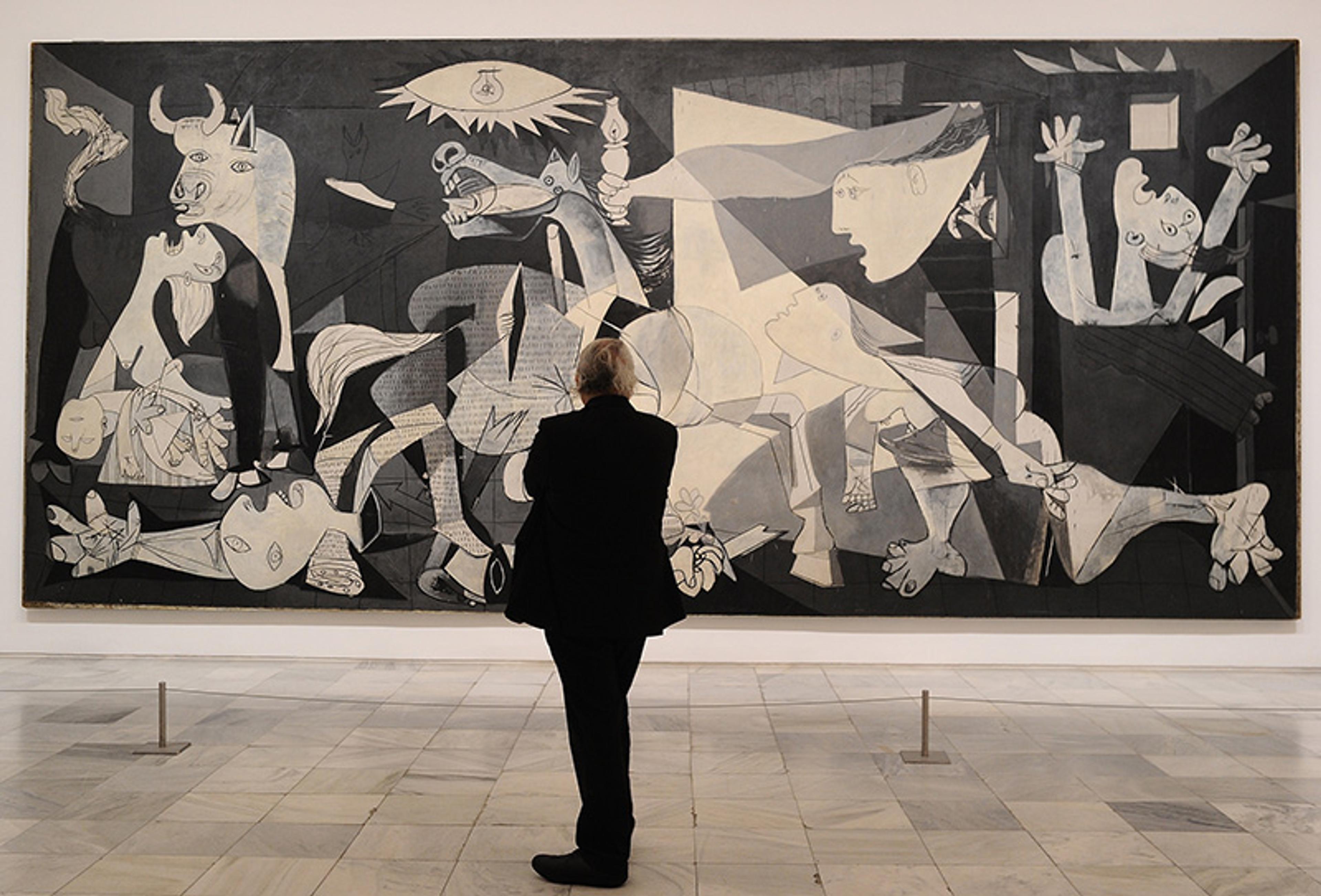
A visitor contemplates Pablo Picasso’s Guernica (1937) at the Museo Nacional Centro de Arte Reina Sofía, Madrid. Photo by Denis Doyle/Getty
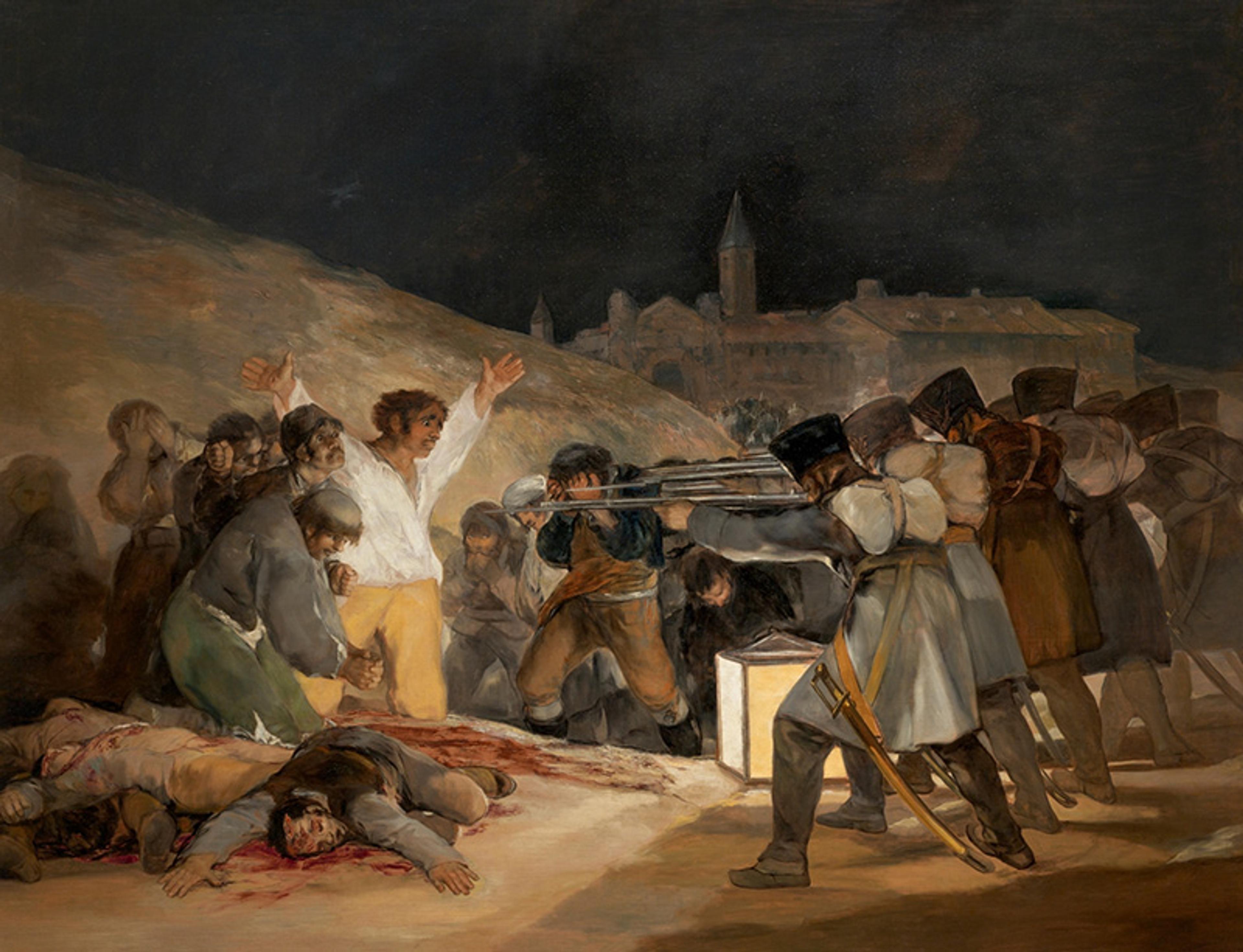
The Third of May 1808: The Execution of the Defenders of Madrid (1814), by Francisco de Goya. Courtesy the Prado Museum, Madrid
Though the art/empathy claim is made broadly about the arts, it’s most often made about the narrative arts – fiction, film, theatre. As heard in this interview, the philosopher Martha Nussbaum believes strongly that, because literature trains our ability to stand in others’ shoes, it makes us more empathetic. And, inscribed on a plaque at San Francisco Playhouse, we read:
Our theater is an empathy gym where we come to practice our powers of compassion … And as we walk through these doors we take with us greater powers of understanding to make our community a better place.
In a radio interview, the neuroscientist Jamil Zaki, an empathy researcher at Stanford University in California, says that he thinks ‘of lots of different forms of art as empathy boot camp’, and that ‘if you see a painting of someone being whipped, or they’re weeping profusely, then you take on that state.’
The general claim is that reading literature and watching films and theatre productions cause us to practise empathy: we put ourselves into the shoes of another – often of others very different from ourselves – and this transport humanises the other. The philosopher Richard Rorty concurs. In Contingency, Irony, and Solidarity (1989), he points to books about injustice – Harriet Beecher Stowe’s Uncle Tom’s Cabin (1852) and Victor Hugo’s Les Misérables (1862) – and suggests that, by learning about the destructive effects of cruelty, readers will become less cruel in their own behaviour. It is said that when Beecher Stowe met President Abraham Lincoln in 1862, he said to her: ‘So you’re the little woman who wrote the book that made this great war.’ Whether or not this story is actually true, and it’s disputed, it nicely captures the belief that literature can change minds and change behaviours.
The belief that reading fiction makes us better, more empathetic human beings sounds right. We all know from personal experience that we often empathise very strongly with fictional characters. The question is whether art can change our attitudes and behaviours once we’ve closed the pages on the novel or left the theatre, making us behave more empathetically and compassionately towards others. When we leave the fictional world, do we feel we’ve paid our empathy dues?
Working with Ruoyan Zeng, an undergraduate honours student at Boston College, I recently completed a study (unpublished) that provides some support for the claim that narratives about suffering can increase rather than deplete empathy. We had 114 college students sign up with us for ‘a study on the effect of reading’. In one condition, participants read Dear America: Notes of an Undocumented Citizen (2018) by Jose Antonio Vargas. This memoir recounts how the author was a child in the Philippines when he was sent to live with relatives in the United States in hopes of finding a better life, and the identity crisis he experienced after finding out that he was an undocumented immigrant. In the other condition, participants read only factual information about the plight of undocumented immigrants in the US.
Before reading, everyone completed an eight-item survey probing their attitudes about undocumented immigrants, asking, for example, how strongly they agreed (on a sliding five-point scale) with statements such as:
- Young adults brought over as children without papers should go back to their home country and wait in line to come here legally, no matter the conditions at home, and no matter how long this takes.
- Families who bring their children to the US without recognised status often have no choice because they’re fleeing from extreme violence, terror and hunger.
Answers to these questions generated an attitude score for each individual. Participants completed this same survey immediately after reading, and again one month later.
Many of the most heinous Nazis loved art, literature and music
Before reading, there was no difference in attitudes between the two groups. However, immediately after reading, the memoir group showed a statistically significant gain in endorsing empathetic and compassionate policies towards undocumented immigrants, while the fact group’s attitudes remained unchanged. One month later, we documented some backsliding: the attitudes of the memoir group started to shift back to where they were at the beginning, making the difference between the two groups no longer significant.
Such a decline after one month, with an intervention involving only one reading, isn’t terribly surprising. It’s exceedingly difficult to change people’s attitudes, and it would be naive to think that one reading could effect a permanent change. Clearly, many readings (and perhaps also discussions of the readings) would be more likely to lead to lasting change. And there’s another issue: almost all of our participants started out with positive attitudes about undocumented immigrants. Those in the memoir group grew more positive. But could we have changed the attitudes of people who, prior to reading, had very negative attitudes? This remains to be seen – and we’re now initiating that study – but surely this will be much harder to demonstrate.
Empathy might well work to make us behave more compassionately. But it could also do the opposite. Bloom cautions that knowing what someone else is feeling also makes some people better at knowing how to make them suffer. And, of course, we’re often reminded of the fact that many of the most heinous Nazis loved art, literature and music. And so, while engaging with art might increase our empathy and compassionate behaviour, there’s no guarantee that it will do so. We ought to resist wishful thinking about the arts unless we have the evidence needed to support rosy claims.
We’re drawn to art for many reasons, but one particularly powerful reason is to experience the feeling that we’re engaging with the mind of a great artist. Take away this possibility by telling us that the work was created by an assistant, a forger or a deep-learning machine, and we’re disappointed, even angered. As far as the effects of engaging with art, artmaking has positive effects on our mood, and viewing art allows us to engage with negative emotions in a way that’s protective and leads to the pleasurable experience of feeling moved. But whether or not the empathy we feel for the artist – say, for Rembrandt as an old man, or that which we feel for the characters in a narrative – actually changes our behaviour once we leave the world of the museum or the novel or film or play, those are as-yet unanswered questions.
To read more on art and wellbeing, visit Psyche, a digital magazine from Aeon that illuminates the human condition through psychology, philosophical understanding and the arts.
